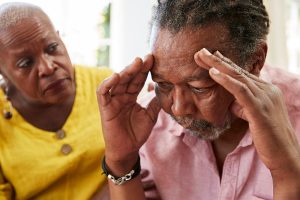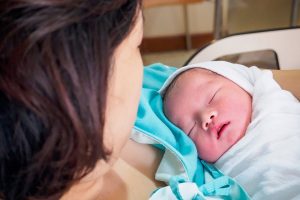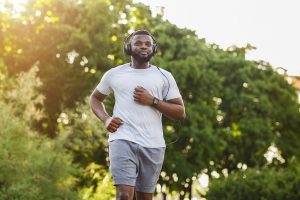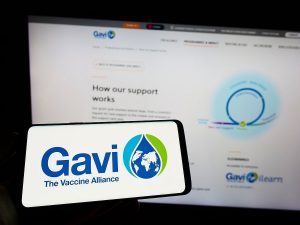U.S. pathology labs are now awash in COVID-19 tests, with more than two dozen rapid tests on the market thanks to expedited approval by the U.S. Food and Drug Administration, infectious disease experts say.
Despite this, laboratories are still struggling with shortages that hamper their ability to get ahead of the ever-expanding pandemic.
“Early in the outbreak testing was limited, and now we have multiple tests available to us,” said Dr. Kim Hanson, an infectious disease specialist with University of Utah Health in Salt Lake City. “The main limitation we’re facing now is having shortages of other pieces around the test itself.”
Labs are scrounging for the swabs needed to get nasal samples, as well as the tubes that store the samples until they can be tested, Hanson said.
Faced with these shortages, health officials have been experimenting with different means to keep COVID-19 testing moving forward, Hanson said.
“Necessity is the mother of invention,” Hanson added. “One thing we’ve done with the swab shortages is to work with industry partners in our area for 3-D printing of collection devices.”
They’ve even gone so far as to try Q-tips as a swab, to see if those can reach deep enough into the nasal cavity to get a good enough sample, Hanson said.
Testing delays have left the United States groping for an effective response to COVID-19.
Chrissie Juliano is executive director of the Big Cities Health Coalition. “Many local communities are flying blind, making decisions in the absence of full information largely due to the failure of the federal government to provide sufficient testing capacity,” she told The New York Times.
The example of South Korea shows that testing is essential in getting ahead of future COVID-19 outbreaks in the United States. In South Korea, widespread testing has kept infections and deaths to a relative minimum, said Dr. Angie Caliendo, executive vice chair of medicine at Brown University’s Alpert Medical School, in Providence, R.I.
“There are areas of this country that have not been hit and are not at peak yet. We might be able to impact their curve more effectively than we have in places like New York and Louisiana and Detroit, that are already peaking,” Caliendo said. “If we have adequate testing, you could consider areas of the country that are just in the early part of their curves being able to implement a different type of strategy, where they did more broad testing.”
At this point, rapid tests are available that can return results on COVID-19 infection in a half-hour to 6 hours, Caliendo said. These tests look for genetic evidence of the new coronavirus to determine if a person has an active infection.
Those rapid tests could allow public health officials in states like Oregon, Arkansas, Delaware, New Mexico and West Virginia to quickly place in quarantine people with COVID-19, and then prevent further spread by testing folks with whom the infected have come into contact.
Hanson said, “We don’t have enough testing available right now to test everybody who is symptomatic, but we have been ramping up very well.”
A second type of test that measures not the virus but the antibodies to the virus also is starting to come onto the market in greater numbers, Caliendo said.
Those tests will help public health officials figure out who has been infected with coronavirus in the past, and could be used to establish whether a person gains immunity after infection and whether their immunity wanes over time, she added.
There’s just one drawback — because the tests were rushed onto the market, no one is certain how accurate they are.
“That’s the trade-off that we have to have,” Caliendo said. “If you need it quickly, we don’t have the time to run the clinical trial” that would make sure the test is accurate and effective.
The Association of Public Health Laboratories is already warning that a number of “crappy” antibody tests are flooding the market, said association CEO Scott Becker.
“The public needs to understand that all tests are not created equal and that these tests could create dangerous scenarios by giving people a false sense of security,” Becker wrote in an email to federal regulators.
“It’s just deceptive,” Becker said to CNN. “They’re selling these tests, but nobody has checked their quality. We need some level of scientific review and rigor on these tests.”
Hanson said the University of Utah has been closely examining the first commercially available antibody tests, while recognizing they may not have been vetted appropriately.
“We put the onus on ourselves to try to get a sense of how well these tests work,” Hanson said. They’re testing to see if the test accurately detects COVID-19 antibodies, and whether it erroneously detects antibodies from other viruses, like influenza.
Antibody tests also could help hospitals better deploy their workers, Caliendo said. If a person has been exposed and gained immunity, they could be placed in parts of the facility dedicated to treating COVID-19 infections.
“We could do that, but I don’t think we have enough trust in what an exposure means that it would influence how we deploy our workforce” at this time, Caliendo said.
More information
The U.S. Centers for Disease Control and Prevention has more about COVID-19.
Source: HealthDay
Copyright © 2025 HealthDay. All rights reserved.

















